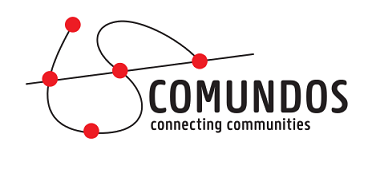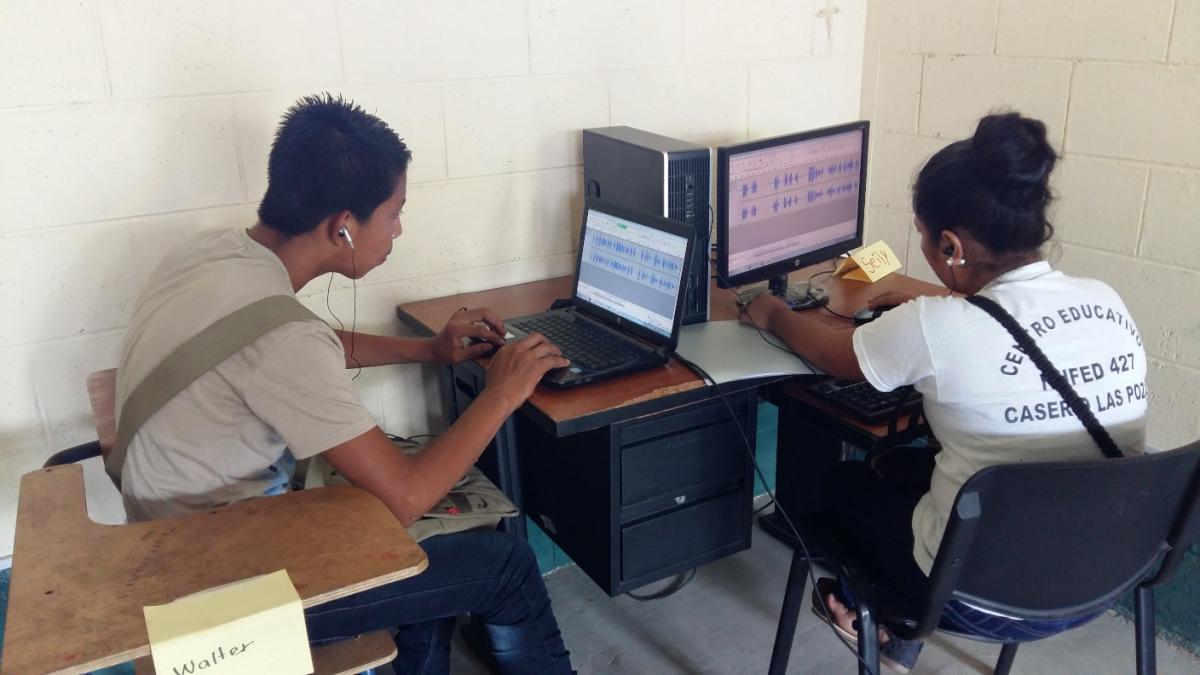Guatemala 2016 Report and Result Analysis : Implementation of Media Literacy, through digital storytelling, in Guatemalan agricultural schools.
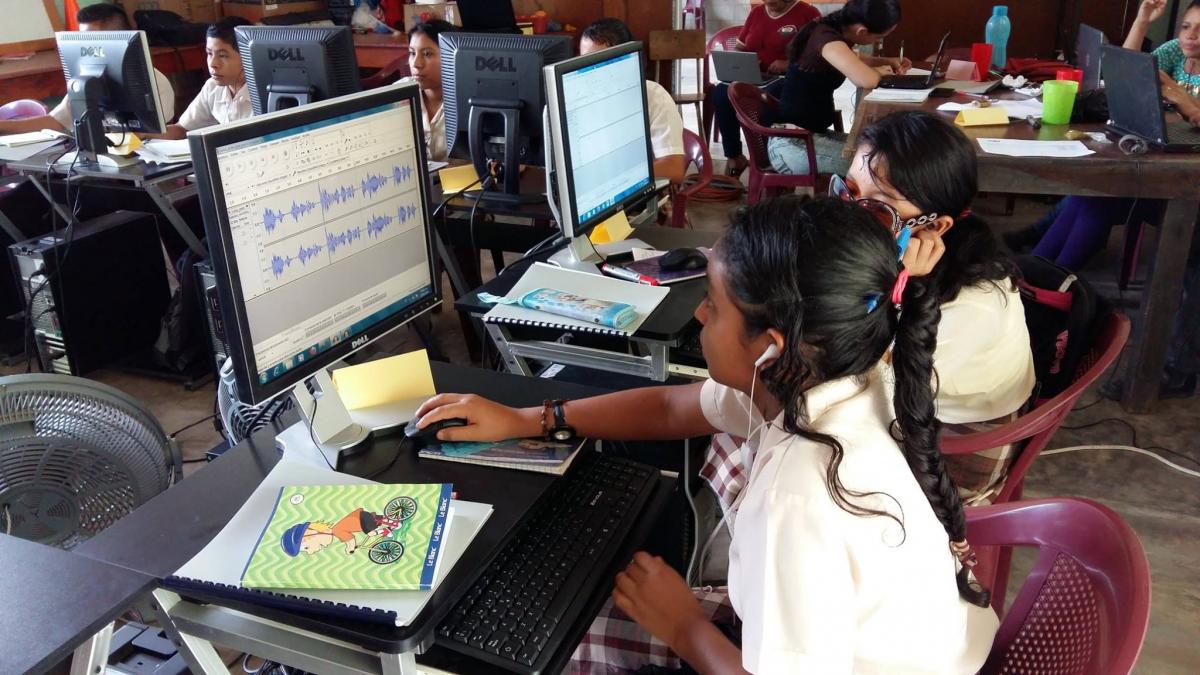 Nowadays educational contexts are changing, while technological solutions have caused a major revolution in the way students learn, and by extension teaching methodology is also adapting to new motivations and interests. But if teachers have not developed these skills and abilities how can they guide and accompany students in this technological-digital quest. ?
Nowadays educational contexts are changing, while technological solutions have caused a major revolution in the way students learn, and by extension teaching methodology is also adapting to new motivations and interests. But if teachers have not developed these skills and abilities how can they guide and accompany students in this technological-digital quest. ?
With the aim of answering the question ASONUFED in coordination with COMUNDOS, is implementing a methodology of digital storytelling, where among others things; the participants develop their capacities for video and audio editing, writing, analysing, synthesing, and the structuring of thoughts and ideas, designed for use as a pedagogical tool inside and outside the classroom.
(original text is in spanish)
 Nowadays educational contexts are changing, while technological solutions have caused a major revolution in the way students learn, and by extension teaching methodology is also adapting to new motivations and interests. But if teachers have not developed these skills and abilities how can they guide and accompany students in this technological-digital quest ?
Nowadays educational contexts are changing, while technological solutions have caused a major revolution in the way students learn, and by extension teaching methodology is also adapting to new motivations and interests. But if teachers have not developed these skills and abilities how can they guide and accompany students in this technological-digital quest ?
With the aim of answering the question DISOP in coordination with COMUNDOS, is implementing a methodology of digital storytelling, where among others things; the participants develop their capacities for video and audio editing, writing, analysing, synthesing, and the structuring of thoughts and ideas, designed for use as a pedagogical tool inside and outside the classroom.
Introduction:
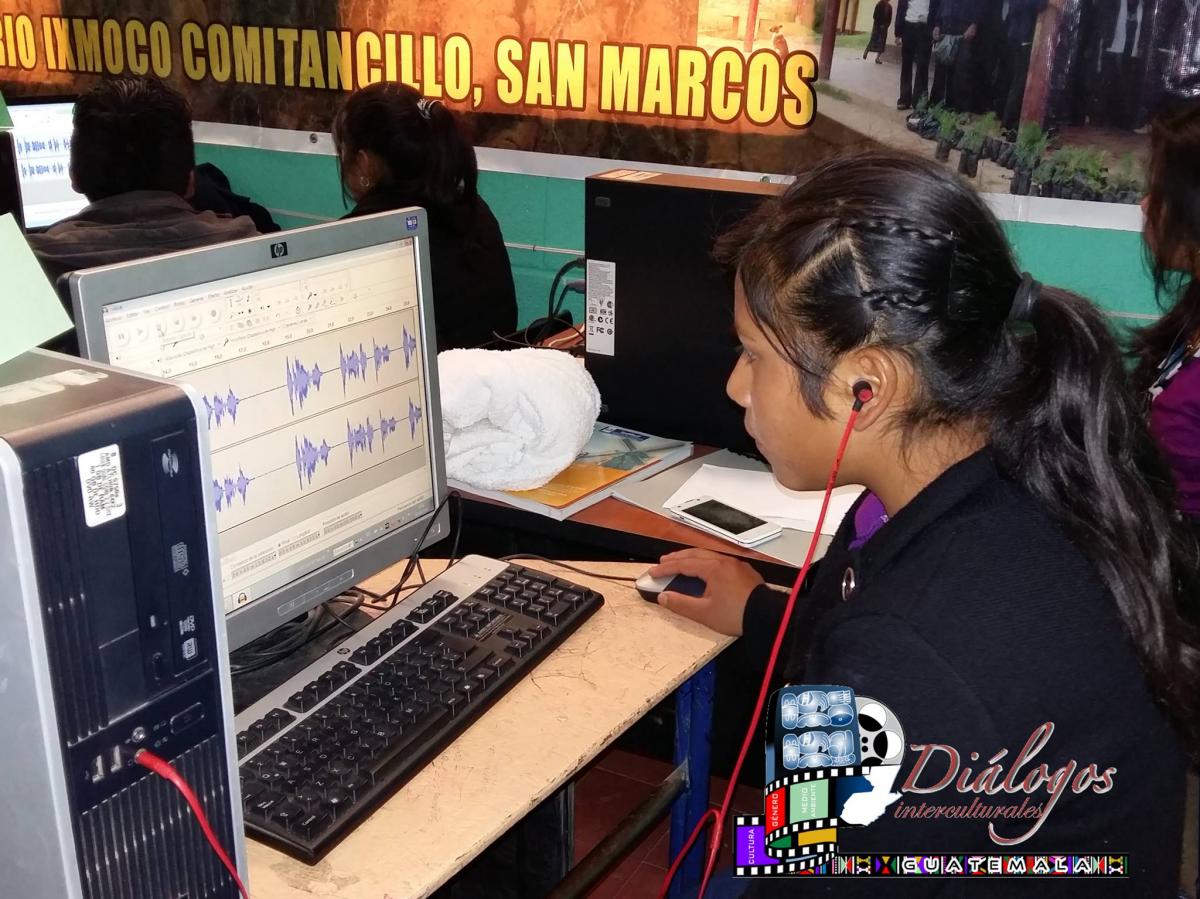 We are part of a globalized world, where technology has taken on a lot of importance in several areas, such as among many others, engineering, architecture, and accounting, and in education it is having important impacts.
We are part of a globalized world, where technology has taken on a lot of importance in several areas, such as among many others, engineering, architecture, and accounting, and in education it is having important impacts.
The incorporation of ICT in schools involves conceiving the process of teaching and learning from new perspectives, a situation that implies new roles and skills for students and teachers: students becoming the builders of their own learning and teachers now having the responsibility for guiding and accompanying the students in this process
Nowadays educational schemes are changing, while technological solutions have caused a major revolution in the way students learn; and by extension, teaching methodology is also adapting to new motivations and interests.
But if teachers have not developed these skills and abilities how are they to guide and accompany the student in this technological-digital quest??
With the aim of answering the previous question, DISOP in coordination with COMUNDOS, is implementing the methodology of digital stories, where, among other things, participants develop their capacities for video and audio editing, , writing, analysing, synthesing, and the structuring of thoughts and ideas, s; designed for use as a pedagogical tool inside and outside the classroom.
The technology (when used efficiently ) facilitates and enhances the processes of teaching, learning and global communication. "Technology is not an end in itself. It does not replace the teacher. Their mere presence does not imply an improvement in the quality of education. In order for Information and communication technologies to have a positive impact on learning, its application should promote the interaction of students, with each other and with the teacher, and constitute a significant contribution in teaching strategies "[1]. A different way of telling and presenting something.
"Using Technology with Creativity"
[1] Currículo Nacional Base, Nivel de Educación Media, Ciclo Básico. Área de Comunicación y Lenguaje, sub área de Tecnologías de la Información y la Comunicación. Ministerio de Educación Guatemala. 2010.
Objectives
-
To create the ability of telling digital stories through the creative use of communication technologies and online information in a context of learning inside and outside the classroom.
-
To produce information through digital narration as a new, simple, easy-to-use and affordable way for everyone. It allows giving wide visibility to an event, a social movement, a fact or a phenomenon in the life of a person and / or community.
-
To communicate. An individual or collective fact, can be told through a digital story, through a montage of photos, sounds, music, subtitles or through one's own voice. An individual or collective history expresses a critical or euphoric point of view on a specific theme, problem or fact.
-
To be inclusive. The digital storytelling technique is easily understood and used by people of different ages, levels of education and social conditions. It does not require previous knowledge, formal education or technical ability.
- To collaborate in the development of competencies established in the CNB of the intermediate basic cycle level in Guatemala.
Analysis of the obtained results
- 102 videos have been created by 14 and 15 year olds, from 11 agricultural schools, as well as 9 videos by monitors, bringing the total number of videos produced in 2016 to 111.
- The components of the CNB areas are being investigated to try to make a report of what the young people and monitors developed in the capacity process, creation and video editing; aspects that without doubt are very valuable and enriching at the level of formative competences for youngsters.
Components of areas and sub-areas where it has been used:
Language:
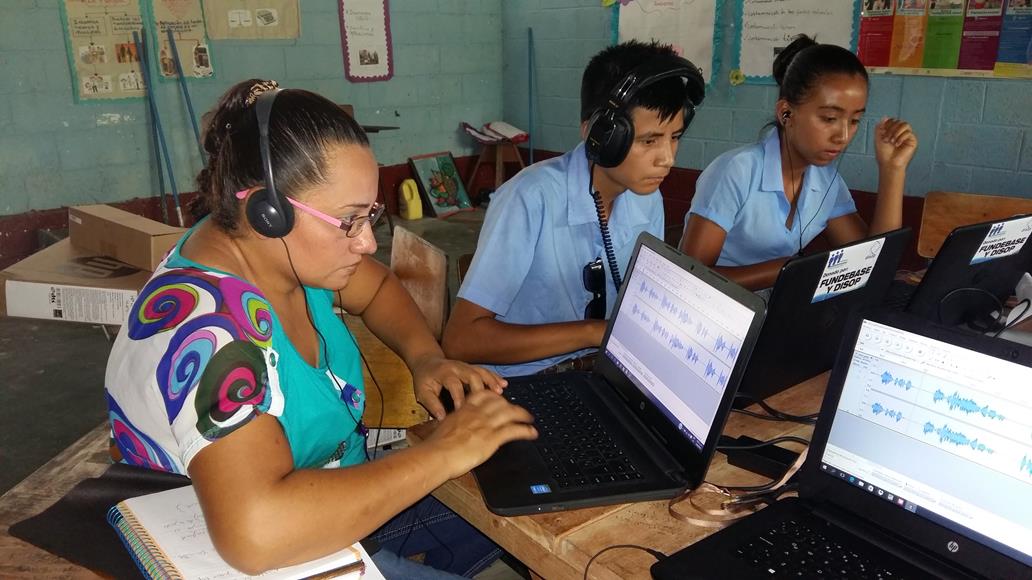 Oral communication - speaking and listening: "The use of the verbal code of each community has its starting point in the oral use of the language to communicate. In addition to the conceptual basis for the communication process, the use of dialogue as a means of seeking consensus is also contemplated. This component is also related to the communication and use of non-verbal language, which includes patterns of behaviour, gestures, voice modulations as to tone and timbre ... "
Oral communication - speaking and listening: "The use of the verbal code of each community has its starting point in the oral use of the language to communicate. In addition to the conceptual basis for the communication process, the use of dialogue as a means of seeking consensus is also contemplated. This component is also related to the communication and use of non-verbal language, which includes patterns of behaviour, gestures, voice modulations as to tone and timbre ... "
Within this aspect, the recording of the voice, and a review of the story to be heard as a natural conversation were very important to be able to convey the desired message. The tone of voice can convey feelings of joy or sadness, encouragement or nostalgia, etc.
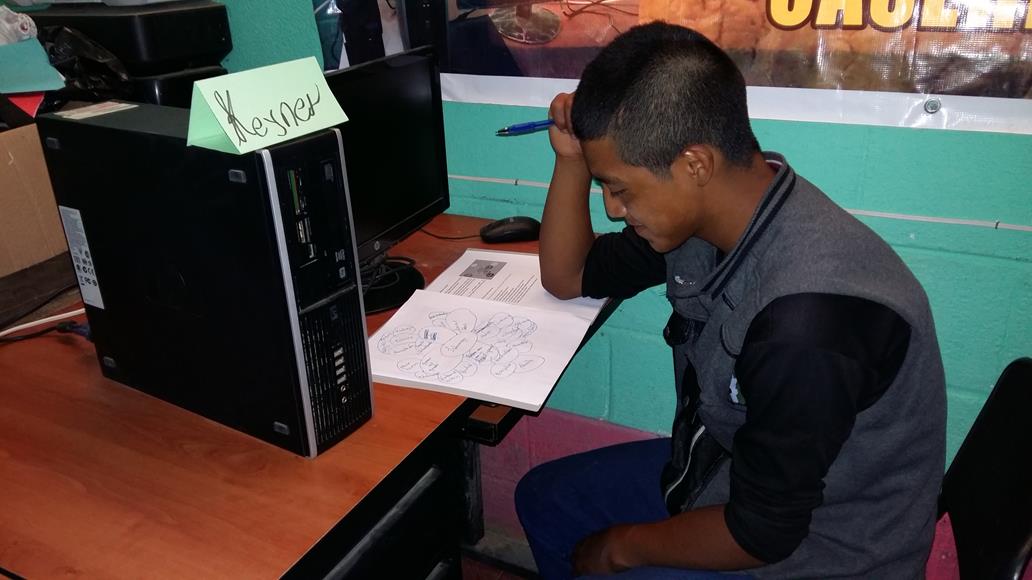 Written communication - reading and writing: "Reading is both a pathway to and a source of new knowledge. The aim is to consolidate reading skills related to speed, reading habits and comprehension... In terms of written production, students are accustomed to using the four basic stages of writing; School work in the field of orthographic norms aims to consolidate the habits that have already been worked on in the Primary Education Level and reinforced in the immediate upper grades of the Average Basic Cycle Level of Education. This component, together with the other components of the subarea, will allow students to approach the use of the written and formal variant of Spanish, which will, in turn, facilitate work with increasingly specialised materials and texts. , It will also diminish the marked separation or rural - urban dichotomy present in the variants of Spanish or Castilian in Latin America.
Written communication - reading and writing: "Reading is both a pathway to and a source of new knowledge. The aim is to consolidate reading skills related to speed, reading habits and comprehension... In terms of written production, students are accustomed to using the four basic stages of writing; School work in the field of orthographic norms aims to consolidate the habits that have already been worked on in the Primary Education Level and reinforced in the immediate upper grades of the Average Basic Cycle Level of Education. This component, together with the other components of the subarea, will allow students to approach the use of the written and formal variant of Spanish, which will, in turn, facilitate work with increasingly specialised materials and texts. , It will also diminish the marked separation or rural - urban dichotomy present in the variants of Spanish or Castilian in Latin America.
The four stages that were worked on by digital stories are: Planning, Idea Production, Text Production and making the content digital. Habits that undoubtedly are very deficient in the Guatemalan context, since in most schools, text reproduction prevails, that is, the child or young person only reproduces what others have said, without their analysing or debating for themselves.
Unlike the methodology of digital stories implemented through DISOP and COMUNDOS, where the young people create their own text, their own history, through their personal, family and / or contextual interests.
 Communicative production and creation: "This component covers oral and written expressions and includes aspects related to the general linguistic description of the language, grammatical aspects, expansion of vocabulary and the use of language for learning ... The highly appropriate management of a verbal code has to do with the enrichment of vocabulary; and in multilingual countries like this one, the levels of bilingualism are defined by the lexical flow and the use that speakers make of the words both in their mother tongue and in their second language. This last component focuses on the functional use of the word at the oral level and above all at the written level, to acquire, reorganise and present data and information.
Communicative production and creation: "This component covers oral and written expressions and includes aspects related to the general linguistic description of the language, grammatical aspects, expansion of vocabulary and the use of language for learning ... The highly appropriate management of a verbal code has to do with the enrichment of vocabulary; and in multilingual countries like this one, the levels of bilingualism are defined by the lexical flow and the use that speakers make of the words both in their mother tongue and in their second language. This last component focuses on the functional use of the word at the oral level and above all at the written level, to acquire, reorganise and present data and information.
Perhaps the digital stories have not completely covered this topic, since many themes emerged. However, the young people who have taken up these issues, have included and reflected according to their context and their own concerns on them. They have incredibly deepened, analysed and made proposals through motivational videos and created awareness for the proper use of the resources around us.
Social Sciences:
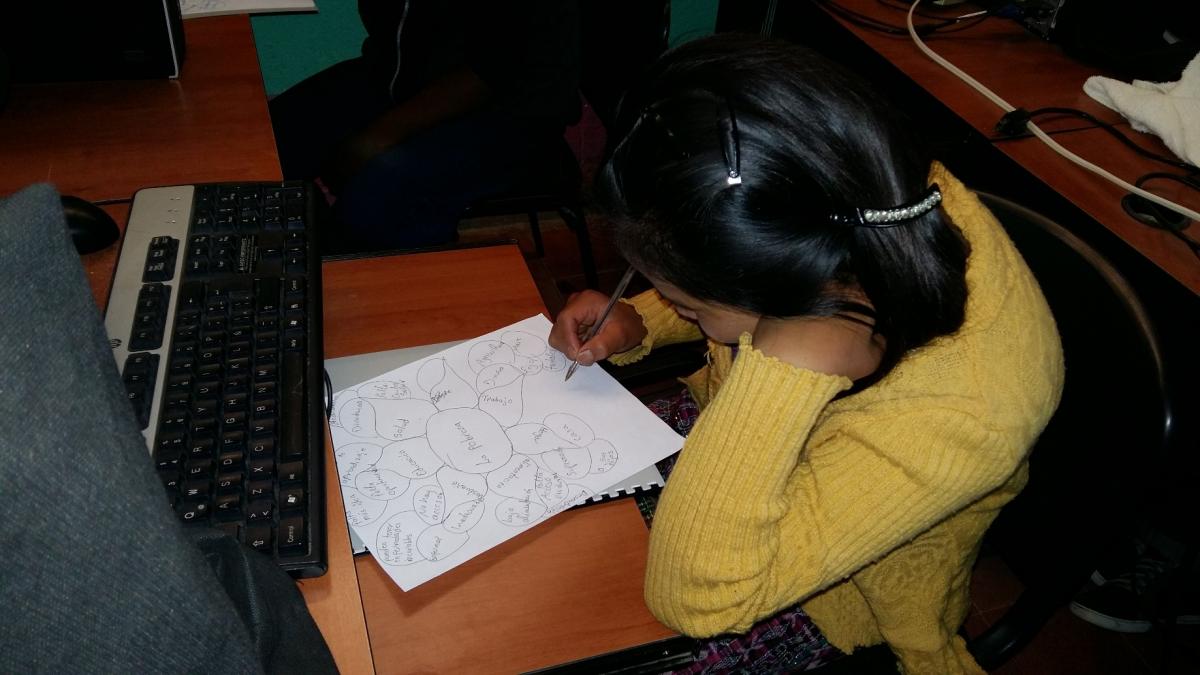
Use of information for decision-making, solving problems and challenges: "includes the management of different strategies for accessing and obtaining information; as well as the use of search mechanisms, skills and varied forms of information processing and interpretation. It develops the acuity, the rigor and the development of logical thinking in solving problems and challenges." The results obtained have definitely shown the involvement of this component, for in all the videos produced there is concern and interest in disseminating issues of overcoming alcoholism, of drug addiction, of environmental problems, of showing productive projects and entrepreneurship, as well of social projects and of life. The transformation of the social information prevailing in the context, translates into videos and interesting texts coming from the people who live it. It contains a very rich and realistic content of what happened or happens in the different contexts of the rural areas of Guatemala.
Artistic expression.
Communication: "The search for adequate images is a representation related to the subject that is being worked on. This type of activity allows for the receiving and passing on of new information and elaborating interpretations by means of the conversion of the visually received information to an oral form. In this process the different disciplines of knowledge participate and, at the same time, emphasis is placed on the discovery and analysis of visual language elements: line, color, texture, , area, perspective and volume and their possible combinations. It is important to stimulate the perception and understanding of the world around the students, so that, through them, they can communicate their message. For this reason, activities are planned with this common goal in mind: to ensure the artistic expressions of each and everyone have a full meaning that communicates ideas and emotions.
One of the main components of the methodology is to identify images that will communicate what is wanted, so that the task of the young person and the monitor is to select among the many images the best ones to support their story, converting written and oral information into visual thus communicating their feelings and interests in a creative and attractive way.
Creativity: "In the creative process, it is intended that each student be able to manifest with imagination and develop a creative attitude within the visual and artistic world."
In this aspect, it includes photographic material created to support the stories. One of the conditions was the non-use (although sometimes used)of photographic material from the Internet that did not present the reality of the contexts from which the stories were created.
Therefore, the challenge is to create their own material for the story they want to represent. This is a highly valued aspect of the process, since they make use of the resource they have on hand like a cell phone, demonstrating that they are very valuable didactic resources in the classroom.
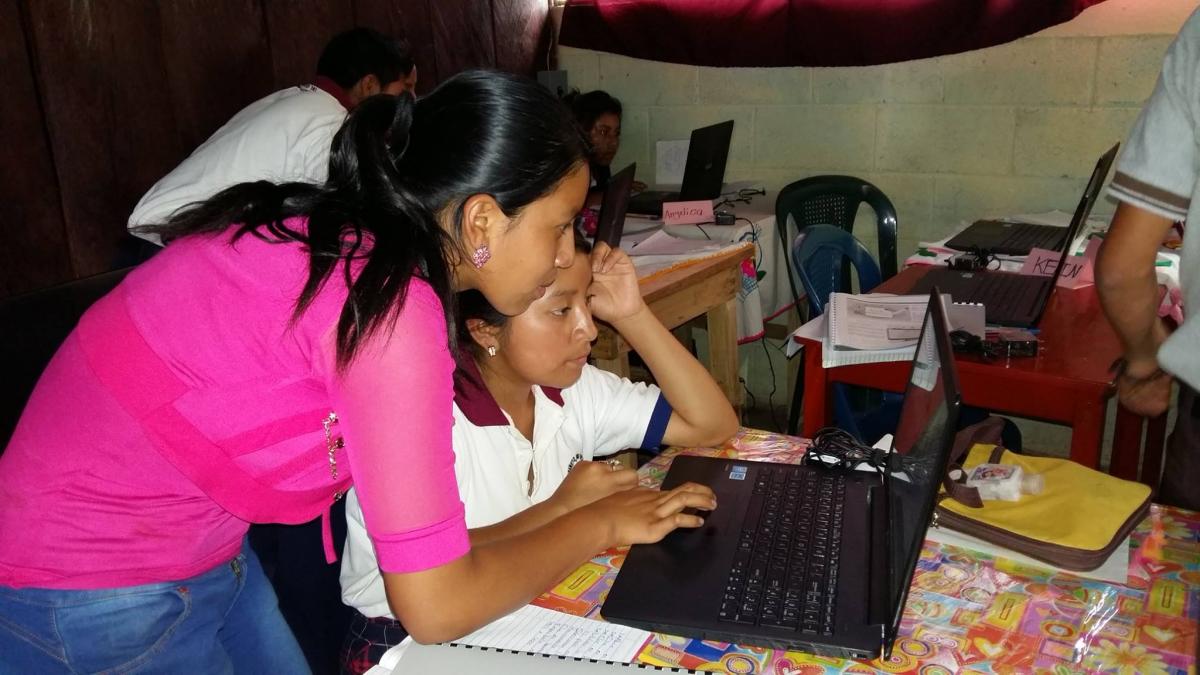 Appreciation: This stimulates the perception of the students, so that the information collected is assimilated and the qualities of the objects or images observed are appreciated. By teaching students to observe, they will not only respond to the visual stimulus of images, but also become capable of analyzing and objectively questioning them. This facilitates a personal taste and therefore allows you to evaluate the visual information of your environment in more objective terms.
Appreciation: This stimulates the perception of the students, so that the information collected is assimilated and the qualities of the objects or images observed are appreciated. By teaching students to observe, they will not only respond to the visual stimulus of images, but also become capable of analyzing and objectively questioning them. This facilitates a personal taste and therefore allows you to evaluate the visual information of your environment in more objective terms.
The objective appreciation was very important in discerning between all the images at hand with those used to create the video. In other words, it revealed the ability to relate, analyse and question information, as well as to represent it visually.
Math:
Uncertainty, research and communication: "This component develops in students the possibility of " managing " much of the information of the daily context that they all must analyze in getting to know a situation and make judgments. The reading and use of graphs, the study of probabilities, the collection and analysis of data, are contents that allow for evaluating the communities, taking decisions and solving problems. "
The previous paragraph completely encompasses processes that the young experienced during the creation of the stories; which is the reason why in my opinion it does not need further explanation.
Examples of areas that can be developed through Digital Stories:
Productivity and Development:

-
Information Management: this component emphasizes promoting the use of different sources and means of information to expand the conceptual framework on the area. It promotes the research, interpretation and use of knowledge and knowledge related to, among other things, development, family needs, and care of the home, occupations and the project cycle.
-
Quality and Technology: this component develops themes and productive processes, necessary to undertake activities that allow transforming inputs into products useful to society. It promotes quality, continuous improvement, the application of appropriate techniques to different productive processes that favor family and community well-being, and environmental sustainability. It also promotes respectful and equitable social relations.
-
Working in the Community for Sustainable Development: this component links work, productivity and development at the community level. It promotes the development of individual and collective working skills, in which the values and cultural identities of the students are manifested. It includes the organization of the work to be done, community organization and local development, and improvement of family, school or community production. It strengthens the use of adequate inputs, technology, design and application of safety standards in productive fields that respond to the needs and interests of the educational community.
-
Entrepreneurship for Development: this component is oriented to awaken the entrepreneurial spirit as a fundamental element for the development and promotion of entrepreneurial initiativesas part of self-knowledge and opportunity analysis. It promotes skills in planning, administration, accounting, production and promotion. It provides spaces for formulation and execution of productive projects and entrepreneurial initiatives that favor the development of the community.
These are just some examples among many others that can be developed.
Skills and technical skills developed (based on assessments of each activity):
Image Editing
|
Sound Editing:
|
Creation of a Story
|
Video Editing
|
General Features
- Proper handling of the computer.
- Creating folders and subfolders.
- Greater creativity in the use of the resources that are held in schools.
- Use of the cell phone as a teaching tool.
- Installing programs on a computer.
- Implementation of cognitive, intellectual and physical abilities.
Use in Real Life:
- Develop personal, didactical or family videos, with concrete messages that help to reflect or motivate.
- Learning for life. It is a tool that can be used in any field of learning.
- Visualization of educational activities carried out between peers and during a period of 3 years. Student history of the results obtained in the 3 years.
- Visualize educational projects or any interesting story that is known locally or regionally.
- You can start generating opportunities by learning techniques to create quality videos.
- In the near future, when you have started a professional career and as a professional, it can be a tool for presenting results.
- Cooperation between colleagues. Help others learn how to present activities creatively.
- Promote talents in the family and / or community through stories
- Improve the management of technology in a very simple way.
- It can be used to generate publicity for a product. Marketing through personal stories.
- A pedagogical and didactical way to work with young people.
- Present the history of a town or community.
- Promotes hands-on workshop and fun learning for students.
- Reporting events of daily life.
Lessons Learned:
Achievements and Skills Developed:
- Ability to collaborate and work as a team (generates ability to integrate proactively and dynamically into any group).
- Generation of knowledge (facilitates the development of individual skills, encourages problem solving).
- Ability to communicate, present and convince (oral and written communication, knowing how to communicate in a dynamic and attractive way in front of the public).
- Develop projects and solve complex situations (design a digital story from start to finish, going through each of its phases and solving problems in the different phases).
- Learn globally (applying knowledge of different areas and putting into practice very different skills and knowledge in a coherent and organized way).
- Promote self-sufficiency and responsibility (development of self-esteem through teamwork and knowledge generation).
- Autonomous construction of knowledge and guided discovery (learning is a process that is maintained throughout life, so the promotion of “Learning to Learn” is a vital - personalized accompaniment).
Guatemala, 6th - December 2016
Ricardo Ixén Sipac
Technical Assistant - Network of Agricultural Schools Guatemala - ASONUFED
Step 1: Teaching among trainers
 |
 |
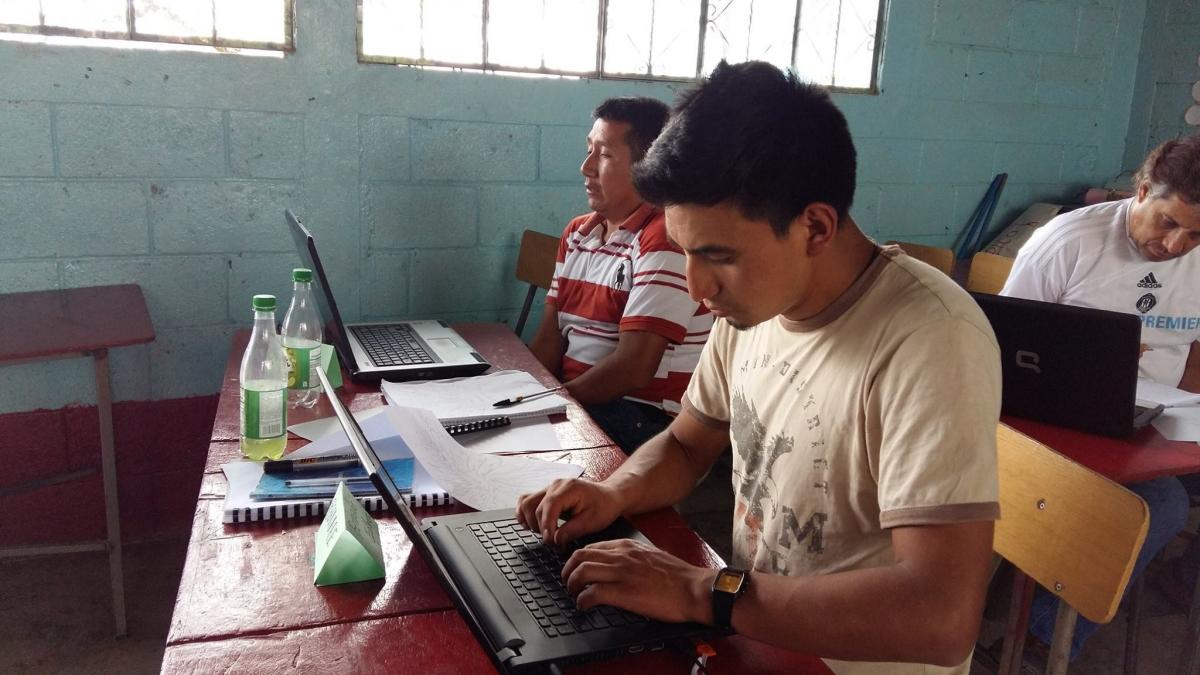 |
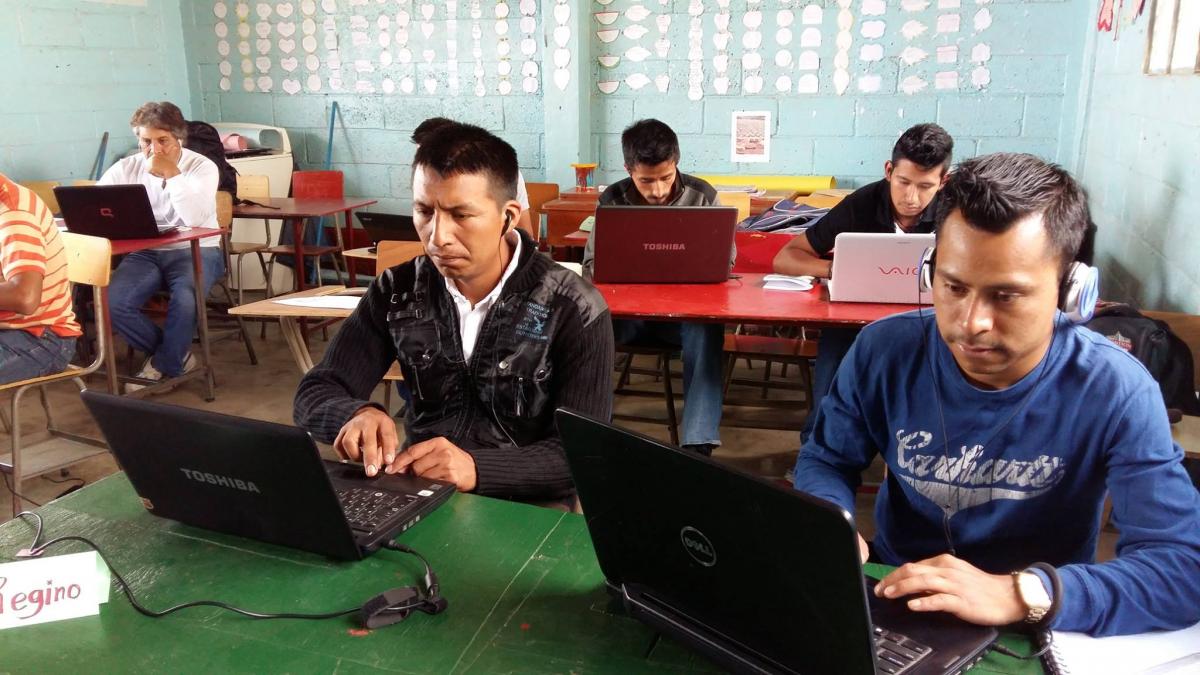 |
Step 2: Teaching students
 |
 |
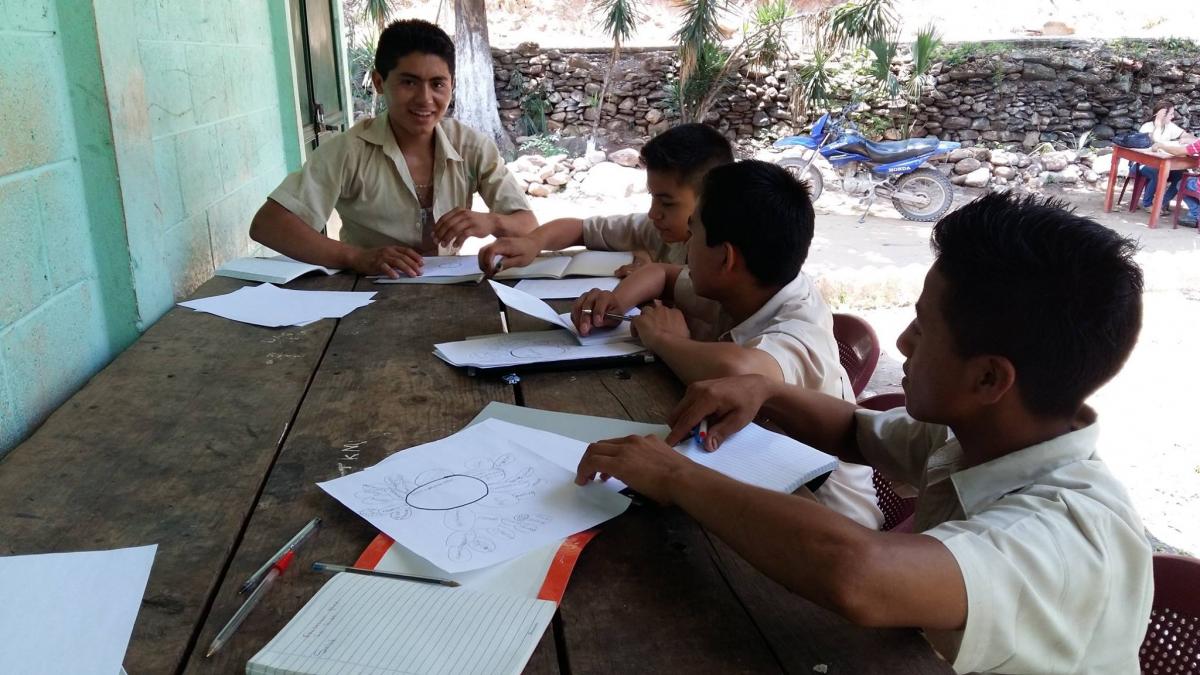 |
 |
 |
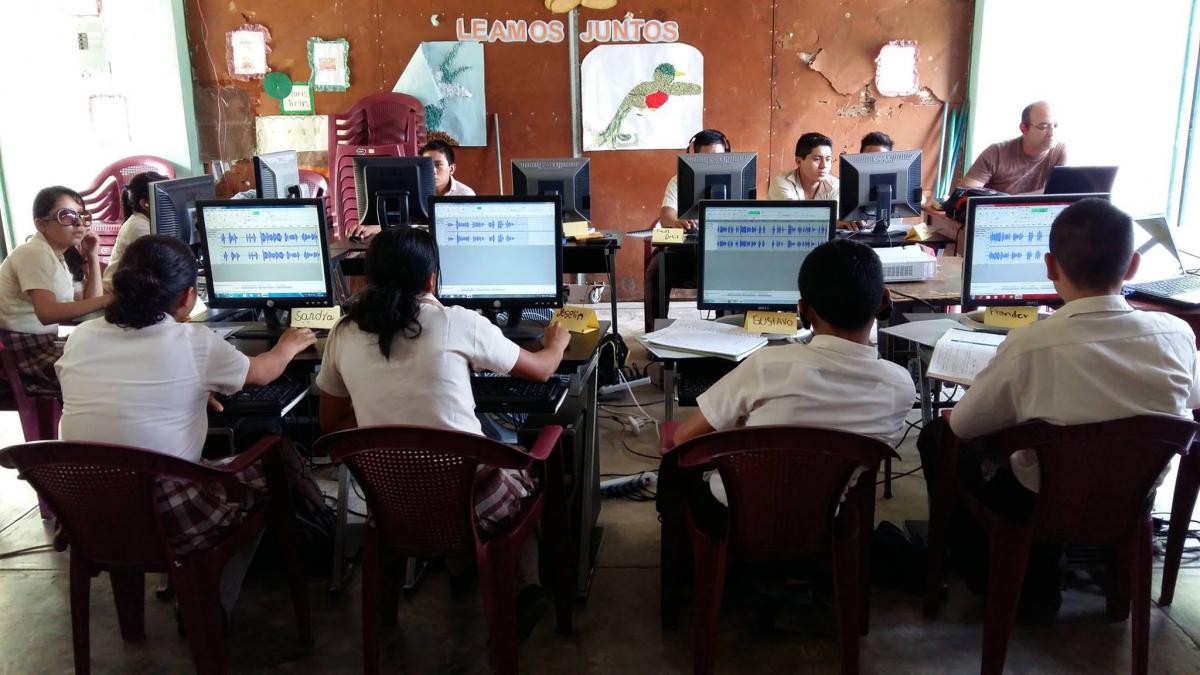 |
 |
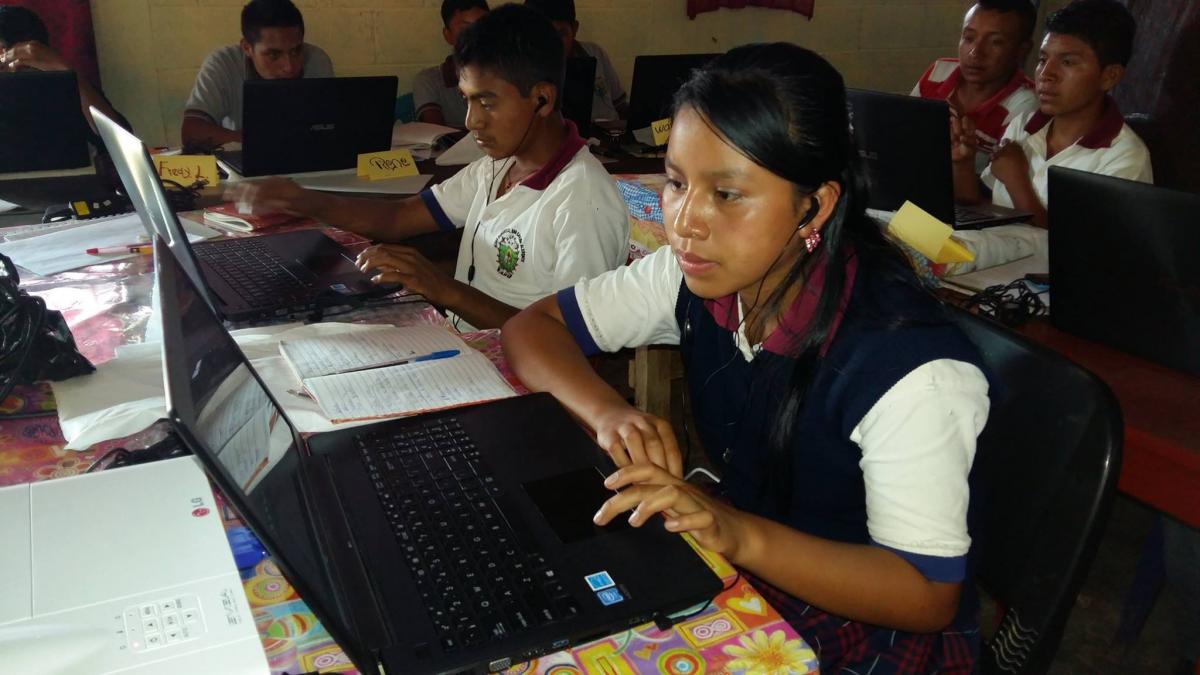 |
A gift for Comundos
Over the years, Comundos has helped remote communities around the world by teaching critical thinking, media literacy and the use of communication technology.
To do this effectively, we need your support for computers, translations, courses and social media management.
Thank you .
BE11 1030 2973 8248
